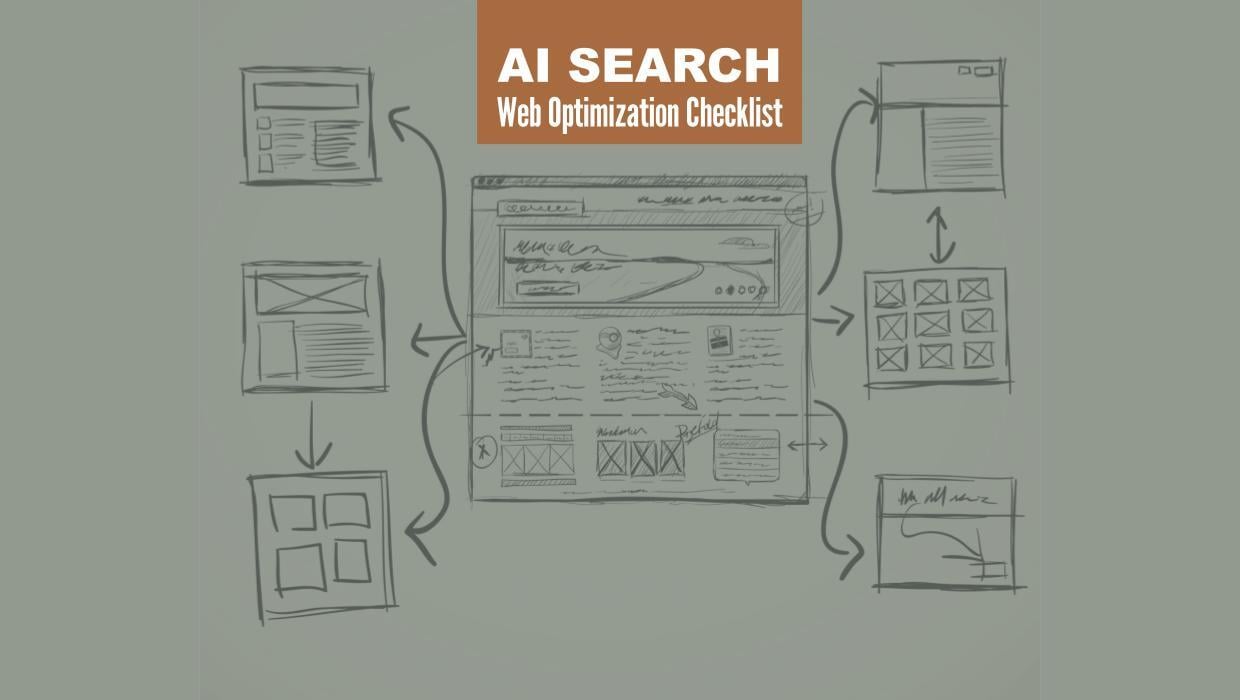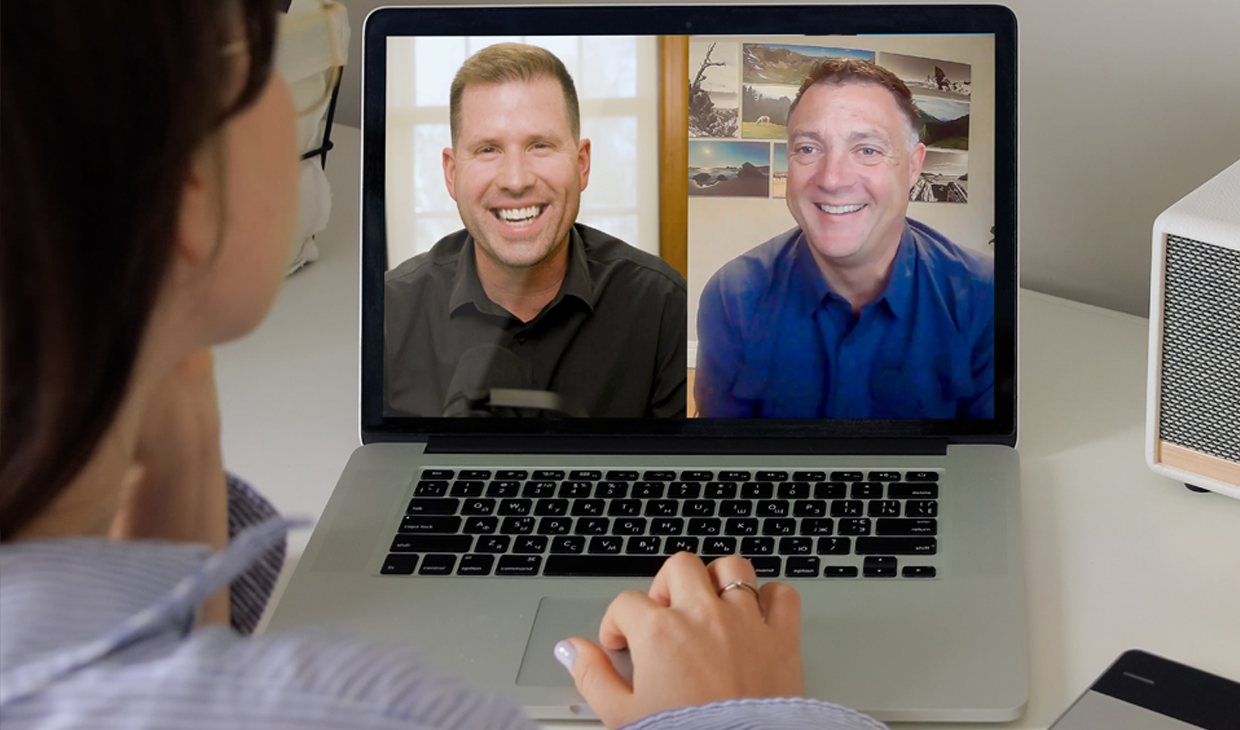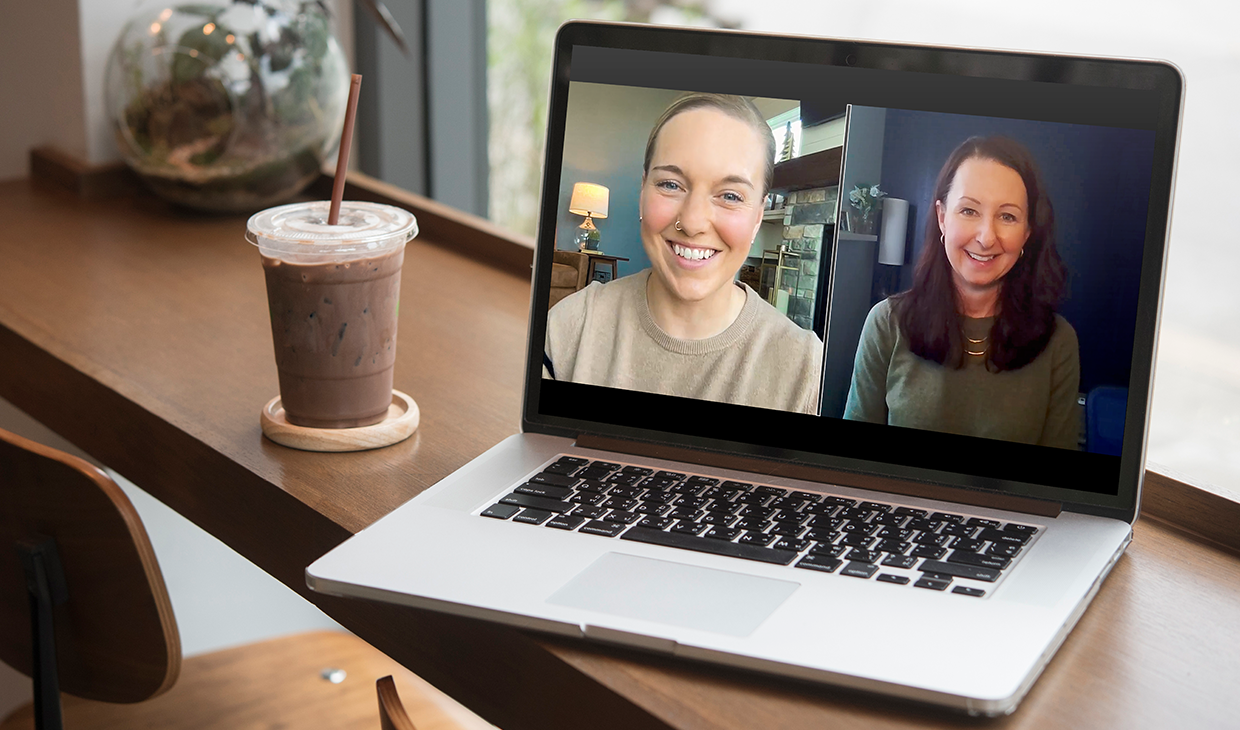SEO Isn’t Dead. It’s Evolving: How B2Bs Can Stay Visible in the Age of AI
Written by
Search has splintered. B2B buyers don’t simply “Google it” anymore. Now, they ask questions everywhere: AI assistants, supplier marketplaces, Slack groups, and voice interfaces all compete to interpret intent.
That means visibility isn’t about showing up in one place. It’s about being understood across many.
For B2B marketers under pressure to prove results, that’s both a challenge and an opportunity. Traffic reports no longer tell the whole story, and the old SEO playbook doesn’t explain why strong content doesn’t always perform.
When these signals arose in our own clients’ data, we needed to see them as clues, not failures. Search wasn’t dying; it was changing. The systems deciding what to surface were learning to reason, not just rank.
So we started learning too. What’s emerging for our team is a discipline akin to visibility engineering: a structured way to help clients’ expertise connect across this new ecosystem of interpreters (humans, algorithms, and AI models alike).
Over months of testing and analysis, we built our own Search Visibility Playbook, a structured way to help B2B expertise get found, cited, and trusted across the new search landscape.
It extends the principles of SEO into the worlds of Answer Engine Optimization (AEO) and Generative Engine Optimization (GEO) — the layers shaping how both people and AI models encounter and digest information.
Jump to section:
- What’s Actually Changing in Search
- Field Note: Identifying an Open Visibility Lane
- How to Apply This Mindset
- The Human Factor
- Where Search Visibility is Headed for B2B Marketers
- AI Search Visibility FAQs
- The Bottom Line
Why Visibility Matters More Than SERP Rankings
In the early days of SEO, success meant earning the top spot on a search results page. That made sense when buyers typed questions into one engine. But today, “rankings” are only one reflection of credibility (and not always the most important one).
When a prospective buyer asks ChatGPT or Gemini for advice, those systems aren’t serving up a list of links; they’re interpreting relationships between entities, context, and trust signals. They select which ideas to summarize, which voices to quote, and which brands appear as the source.
That means another important visibility measurement is how often, and how accurately, a brand’s expertise appears in these synthesized AI answers.
The problem? Many B2B marketers are still optimizing for a world that no longer exists. According to HubSpot’s 2025 State of Marketing Report, fewer than half of marketers understand how to use AI in their strategies. That gap is where visibility is won or lost.
Weidert’s Search Visibility Playbook
Weidert Group has developed a Search Visibility Playbook to bring discipline to discovery. It’s how we uncover where audiences are looking, and why, before we decide what to publish.
We define search visibility as the degree to which a B2B brand’s expertise can be found and trusted across the digital ecosystem, whether the “searcher” is a human, a crawler, or an LLM.
It combines three overlapping yet related disciplines:
- SEO (search engine optimization): earning organic visibility in traditional search results
- AEO (answer engine optimization): Structuring your knowledge to be cited, summarized, and surfaced by AI-driven answer engines
- GEO (generative engine optimization): Ensuring your ideas and insights are represented accurately and contextually within generative AI outputs
These layers are connected by one shared goal: to make your expertise clear and credible wherever people or machines look for it.
When you think of visibility this way, you stop chasing algorithms and start designing systems that endure as search evolves.
Data Sources and Signal Mapping
We collect and align four streams of insight:
- Keyword and topical analysis: Tracks how audiences frame problems and how that language evolves
- Clickstream and behavior data: Reveals how visitors navigate from questions to decisions
- LLM query analysis: Evaluates how generative AI systems select, surface, and synthesize content
- Human ecosystem audits: Examines real search landscapes, from Reddit to industry forums and registries, to identify blind spots
Each stream represents a different signal: linguistic, behavioral, interpretive, and contextual. Combined, they create a multidimensional map of visibility.
From Signal to Insight
Our method combines these inputs to reveal:
-
Interests — what topics are gaining traction
-
Preferences — how audiences prefer to consume or validate expertise
-
Behaviors — where and how they’re engaging
-
Sentiments — how positively or negatively the language describes the brand
This process translates to sharper strategy and higher-impact content because every insight is grounded in how real buyers discover, evaluate, and act.
The Practical Outcome
This playbook helps our team and clients:
- Discover opportunities that were previously hidden
- Align content with buyer psychology, not just keywords
- Continuously refine visibility based on data and human feedback
It’s a living system, always learning, always improving, and built to thrive in a search environment that’s no longer static, linear, or purely algorithmic.
RELATED: Check out part 2 of our search visibility series, "The Content Marketing Checklist for AI-Era Search Visibility"
What’s Actually Changing in Search
The most visible brands in 2026 won’t necessarily be the ones publishing the most content. They’ll be the ones structuring it for understanding, and adding new information to fill knowledge gaps that AI might otherwise bridge with inaccurate, hallucinated outputs.
Generative AI models analyze not just keywords, but semantic meaning, author signals, and contextual relationships.
The systems are asking, in effect: “Who seems to know what they’re talking about, and can I explain their ideas?”
That’s why a high-quality blog post might remain unsurfaced if it lacks structured data or consistent author attribution. The machine doesn’t know who said it, or how credible they are.
Visibility now depends as much on interpretability as on information.
Field Note: Identifying an Open Visibility Lane
One industrial client came to us recently with a familiar concern: a steady drop in organic traffic despite strong sales. They operate in a regulated, fast-moving sector where credibility is still a moving target.
Using the Search Visibility Playbook, we mapped how potential buyers were searching across multiple ecosystems: traditional engines, industry registries, and AI assistants. That analysis revealed a set of under-served queries tied to regulatory updates and permitting questions.
No one credible was answering them in a structured, public way. The opportunity was wide open.
We worked with the client’s subject-matter experts to build a series of helpful, structured explainers that connect technical insights with practical buyer intent, with every asset designed for clarity and traceability, so we can measure improvement quickly. The campaign’s designed not only to restore visibility, but to expand it into places the brand hadn’t appeared before.
That’s what today’s visibility work looks like: identifying open lanes, creating uniquely valuable content that meets the contextual needs of specific audiences, testing what works, measuring impact, and acting on evidence.
How to Apply This Mindset
Weidert’s Search Visibility Playbook grew out of our need to answer one question for clients: What can we do today that still works as search evolves tomorrow?
Here are five disciplines we’ve been focused on:
1. Data-Level Structural Optimization
Visibility starts with being machine-readable. Audit your structure. Schema markup, metadata, author attribution, and consistent taxonomies help algorithms recognize meaning and credibility, not just match words.
Think of it as labeling your expertise. A clear data layer tells search systems what your content represents and how it connects to your broader body of work.
What is Schema?
Schema is clearly structured backend data that gives LLMs a reason to “trust” your content. Think of schema as giving various AI platforms a “cheat sheet.”
Schema Example
Here's an example of schema markup that could be used for this article you're reading right now:
Headline: SEO Isn’t Dead. It’s Evolving: How B2Bs Can Stay Visible in the Age of AI
Author: Jo Phillip, Weidert Group
DatePublished: 2025-10-21
About: AI search visibility strategy; B2B marketing strategy; Search Engine Optimization (SEO); Answer Engine Optimization (AEO); Generative Engine Optimization (GEO)
Citation: HubSpot State of Marketing Report 2025
SameAs: AI search; B2B SEO; AEO; GEO; Search visibility strategy
2. Content Architecture
Content isn’t a library of posts; it’s a network of signals. Organize information around topics and intents, not formats. Build internal links that show relationships and reinforce expertise across pages.
When both people and AI can follow that structure, you get visibility that scales beyond a single search engine.
3. Experience and Credibility Signals
Search engines, whether human-driven or machine, reward proof. Named authors, transparent sourcing, first-party data, and clear “about” context all strengthen trust.
These signals feed into what Google calls E-E-A-T (Experience, Expertise, Authoritativeness, and Trustworthiness), but they also matter to LLMs learning to identify credible patterns.
4. AI-Friendliness
LLMs rely on clarity. They summarize best when content is written in contextually rich, human language that defines its terms and connects ideas. That means:
-
Avoiding jargon for jargon’s sake
-
Publishing expertise on open, crawlable platforms
-
Making sure high-value knowledge isn’t locked behind PDFs, “invisible” website features, or form fills
The easier it is for AI to access your content and interpret your ideas, the more likely it is to surface them.
5. Measurement & Monitoring
Rankings alone no longer tell you what’s working, and it’s not hard to understand why. If those blue links appear below the fold and the user’s served up an AI Overview, those top-ranked links aren’t getting clicks, anyway.
A more useful metric is how often your brand surfaces in search, community conversations, and generative environments — along with a measuring sentiment and trust within those generative results.
The Human Factor
AI cannot replace human expertise, but it’s an essential tool for amplifying yours. The best-performing content in this new environment will have this consistent trait: it’s created by people who know their field and can explain it clearly to the people who are looking for answers.
That’s the paradox of modern search. Machines are deciding what to show, but they still rely on human credibility to decide what matters.
For B2B marketers, the goal isn’t to outsmart algorithms, it’s to give readers (human and machine) confidence in your story.
Where Search Visibility is Headed for B2B Marketers
Search is no longer a linear funnel; it’s a web of decisions happening across multiple interfaces. The brands that win won’t be those who publish the most. They’ll be the ones who make their distinctive expertise easiest to find, cite, and trust.
The future of SEO, and of marketing visibility, belongs to companies that treat it as an ongoing experiment. That’s how we approach it at Weidert: by observing the patterns early, testing what works, and translating those insights into frameworks our clients can act on.
The Search Visibility Playbook is a result of that work: a way to navigate uncertainty with structure, evidence, and a human-first mindset. Because in the end, visibility isn’t merely about ranking higher on a SERP. It’s about being recognized for what you genuinely know, wherever the next generation of search decides to look.
For us, search visibility isn’t about chasing algorithms. After all, those algorithms will likely change tomorrow.
Being found equals being believed. The firm most visible in trusted ecosystems becomes the default expert.
The most sustainable growth now comes from organic authority. Paid reach can still bring value by supporting those organic results, but it’s important to note that ad platforms are increasingly filtered through AI systems.
In short, if your expertise isn’t visible where your buyers are searching, it’s invisible, no matter how good it is.
RELATED: Resonance Over Reach: How to Win at B2B Thought Leadership (Podcast episode featuring Jay Acunzo)
AI Search Visibility FAQs
Is SEO dead in the age of AI?
Not at all. It’s evolved into a discipline of visibility, one that includes SEO, AEO, and GEO as interdependent layers.
How do you optimize for AI when you don’t know how the algorithms work?
By optimizing for clarity, context, and credibility. In other words, optimize for qualities that both humans and machines recognize. Bring your thought leadership to the table to help you stand out from the noise.
What’s the ROI of search visibility?
Compounding trust. Every visible, credible appearance builds brand authority that amplifies the next one, lowering acquisition costs and raising lifetime value.
The Bottom Line
Search visibility leading into 2026 isn’t about gaming systems or chasing clicks. It’s about building credibility at scale, understanding the AI models, and contributing genuine expertise in ways that both people and machines can recognize.
Weidert Group can help you create a Search Visibility Playbook that aligns your brand, content, and data for today’s evolving search environment. Let’s build a strategy that ensures your expertise shows up wherever your audience is looking. Contact us to talk through how our real team of critical-thinking humans can help you stand out in an AI-driven marketing landscape.
Subscribe To Our Blog
Information. Insights. Ideas. Get notified every time a new Weidert Group blog article is published – subscribe now!
You May Also Like...

Search Engine Optimization
Optimize Your Industrial Website for AI Search

Marketing Technology
Why Unified Data Efforts Fail (and How Manufacturers Can Fix It)

Search Engine Optimization
How Falcon Rebuilt Industrial AI Search Visibility in 2025
Accelerate Your Growth with
Weidert Group
If you’re ready to explore a partnership, request a personalized consultation with our team.

